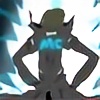HOME | DD
 Quinn-Red — Xenomorph : Cantos 13 Strain - Whistlers
Quinn-Red — Xenomorph : Cantos 13 Strain - Whistlers

#alien #aliens #biomechanical #giger #prometheus #covenant #xenomorph #alienday2023
Published: 2023-04-27 00:23:55 +0000 UTC; Views: 8170; Favourites: 182; Downloads: 0
Redirect to original
Description
An isolated branch of the xenomorph family tree named after the colony world of it's discovery, the Cantos 13 Strain is a strange and insidious organism. Description:
The mature stage of the strain are referred to as "Whistlers" by the colonist, based on the metallic whistling they produce to communicate, or more intensely when their about to strike their target.
Whistlers are about 8 to 9ft in height when full upright, but generally keep to crawling rapidly on all four limbs. Despite this size they can contort and squeeze themselves into smaller spaces in order to work and hunt through the tunnels they develop during infestations.
Rather than the tail of their Acheron Strain cousins, the Whistlers have a stinger that lacks the tail's range but makes up for it with extreme power, able to plow through steel with ease like a jack hammer. The stinger's sheathe resembles the creature's head, likely to confuse opponents and prey as to were the true head is, and which end can see them.
The Cantos 13 Strain expresses it's host traits differently than the Acheron Strain, exaggerating much of it in favour of climbing and tunnelling behaviour. The host's anatomy seems to be duplicated from the upper torso, creating a twin-torso like anatomy for the final organism, perhaps to ensure all limbs are gripping limbs.
The dome extends into a "horn" that either plays a sensory role, or is simply used to bash prey to concussion or death.
A long spine makes the whistlers very flexible, twisting their bodies easily when needed, such as to swing their stinger-end towards prey with the lower arms extended to grab them.
Behaviour:
Whistlers do not exactly organize in the hive structure of their cousins, at least not as tightly. Individuals are more "selfish" and will not blindly dash into danger for the sake of a greater whole. They do coordinate efficiently however, often preferring to stalk and ambush prey slowly and patiently, communicating positions via wind like whistling or subtler hums.
If the danger is too great they will flee, though they will keep close to observe for vulnerabilities.
Whistlers will use their whistling to trick prey into moving were the Whistler wants them, shepherding them through fear into desired ambush areas.
Whistlers are generally more patient with hunting and more willing to knock prey unconscious the further they are from the brooding site, but aggression increases as one nears the heart of their nest.
Infestation:
A unique trait of the Cantos 13 Strain is how they grow their hive infestation.
Like the Acheron Strain, much of the hive material is built from hardened saliva, mucus, and remains of host, but the Whistlers will cultivate and culture these growths into great hollows and spires, like a black tumorous forest. They seem to do this as to increase the amount of spaces for them to hide and suit their crawling behaviour. They can use the material with surprising intelligence, building bridges across gaps or walls to fill-in escape routes.
When a Whistler dies, their body grows with hive material into a jutting spire. This seems to be done so any future Whistlers in that area know were danger/potential host may be and to give them cover from whatever killed the dead Whistler. These spires can also hold the eggs each Whistler carries, allowing them to hatch near potential host.
Much of the the land of the Cantos 13 colony was covered in pale and long dead ancient growths of hive matter, mistaken as a dead coral-like structure native to the planet by the colonist. Some structures implied intelligence to these creations, such as a "pen" filled with skeletons of a long gone sapient species, seemingly kept as cattle.
It was only much later in the colony's development that they discovered that this world was a necropolis with still sleeping demons.
Related content
Comments: 5

👍: 0 ⏩: 0

👍: 1 ⏩: 0

👍: 1 ⏩: 0

👍: 1 ⏩: 0

👍: 1 ⏩: 0

















